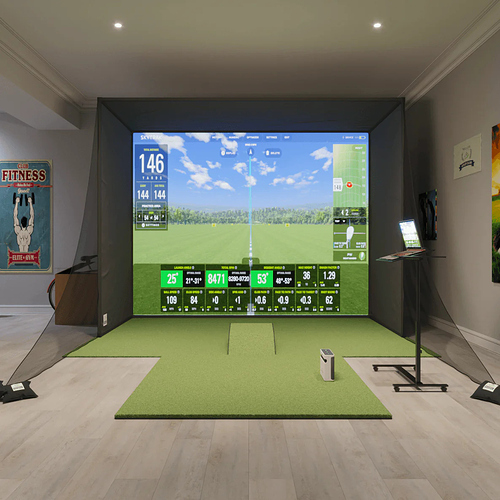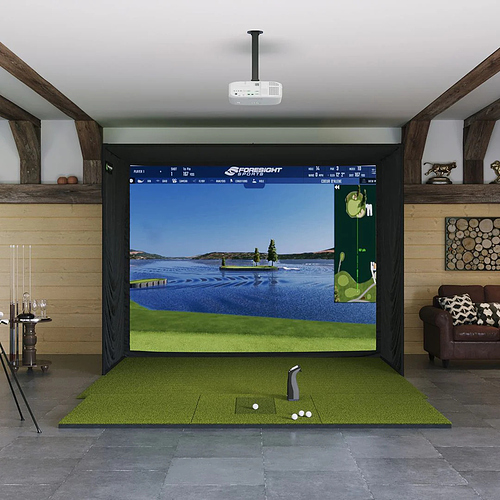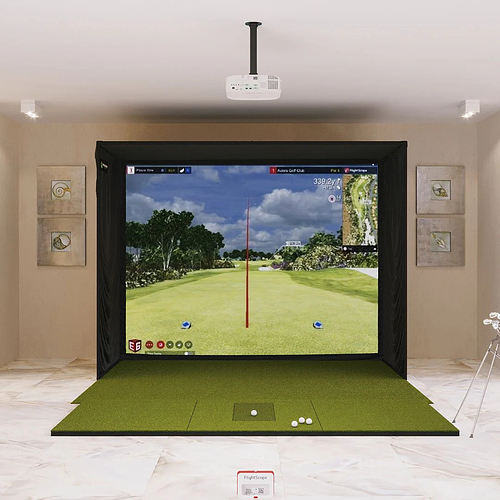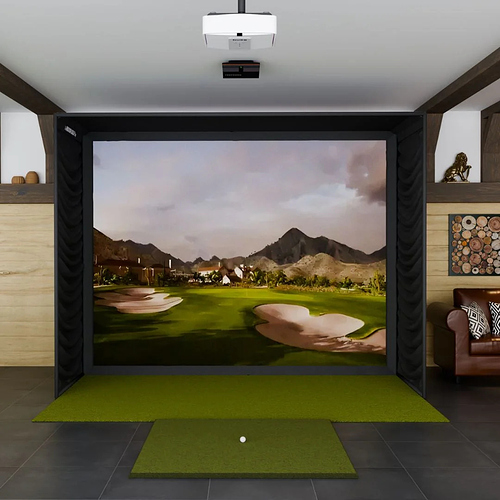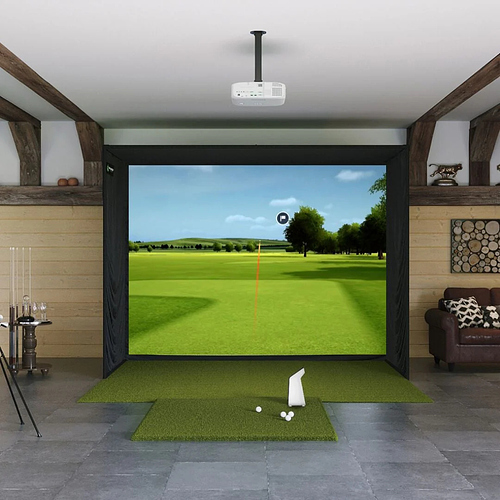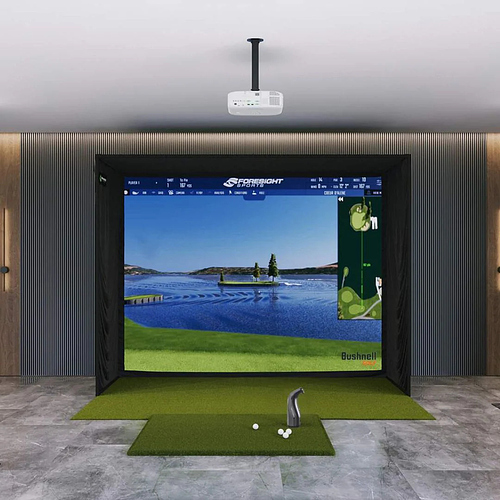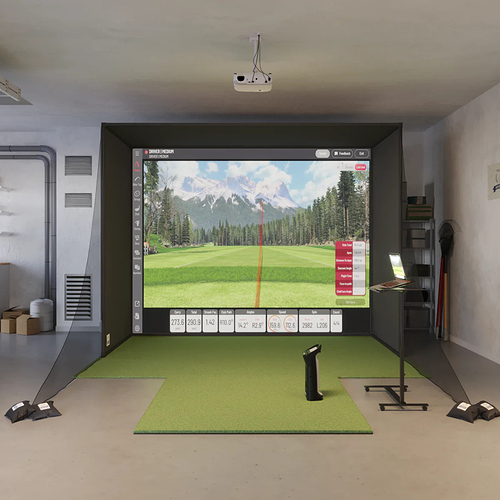If you’re looking for the best golf simulator for home, here’s what I found after doing a bunch of research, watching install videos, and comparing notes from actual users. I’m retired, so I have more time on my hands.
These top picks stood out based on how well they fit into home spaces, how accurate they are, and how much they really give you for the price.
1. SkyTrak+ SwingBay Golf Simulator
If you’re just trying to get started without stressing about space, this one checks a lot of boxes.
SkyTrak+ uses both radar and high-speed cameras now, which means you’re getting way more than basic ball data.
It tracks club path, face angle, and spin, and plays smooth with GSPro or E6 if you’ve got a decent gaming PC.
The SwingBay setup is clean. It fits in most garages or spare rooms with around 9 to 10 feet of ceiling height. I’ve seen people turn a guest room into a legit sim with this and still have space to move.
Solid value, real feedback, and no weird install headaches.
2. Foresight Sports GC3 / GC3S SIG10 Golf Simulator
This is where things start getting serious.
the Foresight Sports GC3 runs on triple high-speed cameras and gives back pro-level accuracy for both ball and club data. The S version just unlocks more software (FSX 2020 and FSX Play), so you don’t need to worry about adding anything later.
When this is combined with the SIG10 enclosure, it feels like a studio-level setup. I saw one built out in a basement with 10’ ceilings and 18’ depth and it looked like something out of a golf training facility.
GC3 is known for being plug-and-play with no ball marking, and it still gives exact carry, launch, spin axis, and strike location.
3. FlightScope Mevo+ SIG10 Golf Simulator
This one’s for those who’ve got the room and want to get deep into their numbers. Mevo+ is radar-based, so you’ll need around 16 feet of space front to back for proper reads.
But when it’s dialed in, especially with the Pro Package and Fusion Tracking, it’s giving you data that rivals units twice the cost.
People run this in garages and bonus rooms all day. You get shot tracing, club metrics, and even a swing speed training mode. I’ve heard folks compare it to GC3 and the differences weren’t huge once properly set up.
4. Trackman iO SIG10 Golf Simulator
If you want the gear most coaches and pros trust, but made for home, this is the one.
Trackman iO is ceiling-mounted, so you don’t need anything sitting on the floor. It tracks club path, launch, spin, face angle, all the techy stuff without needing stickers or extra calibration.
It’s designed for indoors, and the install is way cleaner than you’d expect. I watched a full garage build with this setup and it turned the whole space into a private studio. You’ll need solid lighting and at least 10-foot ceilings, but once it’s in, it just works.
5. Garmin Approach R50 SIG10 Golf Simulator
Garmin came out of nowhere with this one.
The R50 is way more than a basic launch monitor. It tracks spin, face angle, and even gives you club path visuals through the app. It works with Home Tee Hero for simple rounds or links up with E6 for something more realistic.
This sim combo is great for tighter spaces and still feels complete thanks to the SIG10 screen.
I saw someone use it in an upstairs bedroom with only 8.5 ft ceilings, and it still read clean. It won’t replace a GCQuad, but for casual and even mid-level work, it does more than people expect.
6. Bushnell Launch Pro SIG10 Golf Simulator
This is the under-the-radar pick.
It’s the same hardware as the GC3, but with Bushnell’s pricing model. You can start with just ball data and then unlock club data and sim play later through a software upgrade.
I’ve seen this one in a ton of garage setups. Accuracy holds up session after session, and the built-in display lets you see results without needing to fire up a computer every time.
When you’re ready to go full sim, it runs FSX just like the GC3. Easy to grow into if you want to start smaller.
7. Uneekor EYE MINI SwingBay Golf Simulator
This is the one people sleep on until they see it in action. The EYE MINI uses dual high-speed cameras and doesn’t need any ball markings.
The real highlight is Club Optix, where it shows your impact in slow-mo. It actually helps you see if the clubface was open or shut in a way numbers alone don’t show.
It’s portable but doesn’t feel light. With the SwingBay enclosure, it turns into a proper home sim you can take with you if needed. The software is solid, works with GSPro, and if you want something that can move but still be your main setup, this is it.
Final Look
Each of these has a role depending on your space and how you plan to use it. Some are made for tight setups. Others need more room but give you full simulator play and teaching-level feedback.
If you’re stuck between two or have questions about the install space, software, or which one gives you more flexibility, drop a comment. I’ve gone through the research already and happy to pass on what I found.

